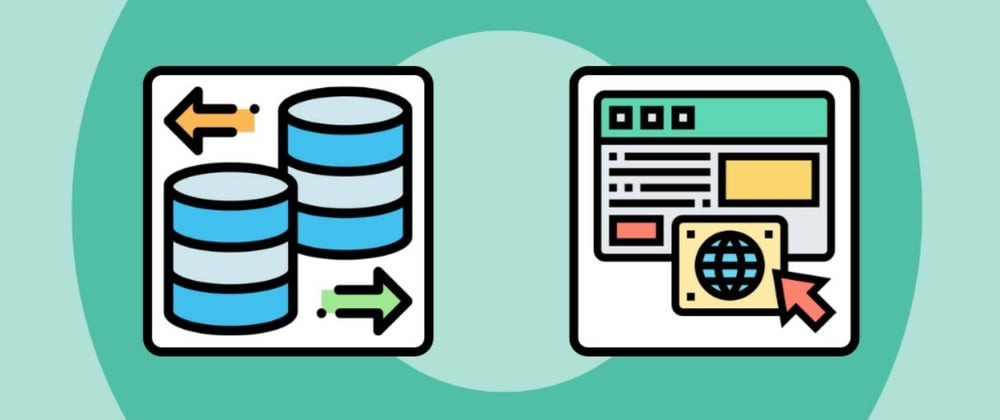When it comes to databases, there are two main types: SQL and NoSQL. You may be wondering what the differences are between the two and what attributes of each determine their best use cases. Whether you're designing a system or simply choosing a database for your next project, understanding the strengths and weaknesses of each approach can be a critical factor in determining the performance and longevity of your program. It's important to think about the kind of data you'll be working with, as well as your priorities when it comes to availability, performance, security, and several other factors.
In this article, we'll explore the key differences between SQL and NoSQL databases and provide some insight into when you should use each one. As a bonus, we'll also briefly touch on a few hybrid approaches that attempt to combine the best of both worlds.
Let's get started!
We'll cover:
- Overview of SQL and NoSQL databases
- SQL databases: Strengths and weaknesses
- NoSQL databases: Strengths and weaknesses
- Hybrid database options
- Wrapping up and next steps
Overview of SQL and NoSQL databases
In this section, we'll provide a quick overview of both SQL and NoSQL databases. Furthermore, we'll briefly discuss their architectures and provide a few examples of each type of database.
SQL databases
SQL (structured query language) databases are essentially relational databases, meaning that data is organized in terms of their relationships with other data. Nowadays, relational databases are loosely referred to as SQL databases because SQL is the primary language used to create and manipulate data in relational databases. Relational databases were inspired by the rules of formal mathematics, specifically set theory. Set theory is a branch of mathematics that studies the properties of well-defined collections of distinct elements, called sets, and the relations between them.
So, in any relational database, you'll find that data is organized into tables. Each table is made up of rows and columns. To identify a table's row uniquely, we use a primary key. To establish relationships between different tables, we use foreign keys.
For example, if you're tracking customers and orders in a SQL database, you can use a foreign key to link each customer to their respective orders. This would allow you to answer questions like "How many orders did Customer X place?" or "What was the total value of all the orders placed by Customer Y?"
Note: Relational databases are managed using a relational database management system, or RDBMS. MySQL, MariaDB, and SQLite are all examples of open-source RDBMS. Oracle Database is an example of a multi-model database management system, which supports relational databases in addition to other data models.
NoSQL databases
NoSQL (not only SQL) databases, on the other hand, are non-relational. There are several types of NoSQL databases, such as column-oriented, graph-based, document-oriented, and key-value store databases. The focus of this article will be on document-oriented databases as they are one of the most widely used NoSQL databases. Document-oriented means that data is organized into documents, which can contain any kind of information. A document stores data in field-value pairs, where fields can be of different types. All the information about an object is stored in a single document, whereas documents containing similar objects are placed in a collection. Instead of SQL, a document-oriented database uses simple API or a query-based language to create and manipulate documents. Examples of document-oriented databases are DocumentDB, MongoDB, and OrientDB.
It's worth noting that there are different types of NoSQL databases, each with its own strengths and weaknesses. The most popular type is the document database, which is what we'll be focusing on in this article. Other types include key-value stores, column-oriented databases, and graph databases.
What to keep in mind as you select a database
There are many factors to consider when choosing a database for your project. Here are some key considerations:
- Availability: How important is it that your data is always accessible? If you can tolerate a little downtime, you may be able to save money by using a cheaper database solution.
- Performance: How much data storage do you need, and how fast does it need to be accessed? If you're dealing with a large amount of data or real-time queries, you'll need a database that can scale horizontally (by adding more nodes to the system) and vertically (by adding more resources to each node).
- Security: How important is it that your data is secure? If you're storing sensitive information, you'll need to choose a database with robust security features.
- Cost: How much are you willing to spend on your database solution? If you're working with a limited budget, you may need to consider a less expensive option.
- Ease of use: How important is it that your database is easy to use? If you're working with a team of developers, you'll want to choose a solution that everyone is comfortable using.
- Flexibility: How important is it that your database can be easily modified? If you need to make changes to your data model frequently, you'll want a database that supports schema evolution.
Keep these in mind as you evaluate the different options available to you. Let's start by looking at SQL databases.
SQL databases: Strengths and weaknesses
Relational databases have been around for decades, and they're still the most widely used type of database. They're well suited for data that can be easily organized in a tabular format using rows and columns, such as customer information, product catalogs, and financial records. SQL databases are also very easy to use; most developers are already familiar with SQL syntax, and many tools are available for managing SQL databases.
Advantages of SQL databases
SQL databases have several key advantages that make them a good choice for many applications:
- Relational model: This model is well-understood and easy to use. It's also easy to enforce data integrity in a relational database.
- Transactional support: SQL databases support ACID properties (atomicity, consistency, isolation, durability). Support for ACID properties means that data is always consistent and can be easily rolled back in the event of an error.
- Rich query language: The SQL language is powerful and expressive. It's easy to write complex queries against a SQL database. SQL is also highly standardized thanks to extensive documentation over years of development.
- Declarative querying: SQL databases allow you to write declarative queries, which are easy to understand and maintain.
- Stored procedures: SQL databases support stored procedures, which can be used to encapsulate complex business logic.
- Ease of use: SQL is a very user-friendly language and can be used to perform basic CRUD (Create, Read, Update, Delete) operations for most database management tasks.
- Performance: SQL databases are very fast, and they can scale vertically by adding more resources to the server.
- Reliability: SQL databases are very reliable; they can typically handle large amounts of data and high traffic without issue.
- Security: SQL databases often have robust security features, such as user authentication and data encryption. The support for these features varies from one database to another, but they are typically very well-implemented. For example, PostgreSQL and Microsoft SQL Server both provide their users with a wide range of security options like data masking and row-level security.
These advantages make SQL databases a good choice for applications that require high availability or strong data consistency.
Disadvantages of SQL databases
SQL databases have some drawbacks that you should be aware of:
-
Scalability: SQL databases don't scale as well as NoSQL databases. It's difficult and costly to add more nodes to a SQL database without incurring downtime. Their inability to scale horizontally is one of the main reasons why SQL databases are being replaced by NoSQL databases in many applications.
- Big data: Issues with scalability make SQL databases poor candidates for use in big data applications.
- Speed: They can be slow. SQL databases often require joins to retrieve data from multiple tables, which can be time-consuming.
- Big data: SQL databases are not well-suited for storing large amounts of data because they cannot scale easily.
In other words, SQL databases are a good choice for applications that require high performance, strong data consistency, and easy-to-use query language. However, they may not be the best choice for applications that require flexible schema or horizontal scalability.
Applications of SQL databases
Let's look at a few examples of applications that would benefit from SQL databases. These include financial applications, e-commerce applications, and CRM systems.
- Financial applications require the kind of transactional support that SQL databases provide. They also tend to have a lot of data that is easily organized into rows and columns, like transactions, invoices, and account balances.
- E-commerce applications need to be able to handle a large number of concurrent users and a large amount of data. For example, an online store might need to track inventory levels, customer orders, and shipping information.
- CRM systems need to be able to support a complex schema with many relationships between different types of data like customers, orders, products, and so on.
Note: Examples of SQL databases include MySQL and PostgreSQL.
NoSQL databases: Strengths and weaknesses
NoSQL databases have become increasingly popular in recent years, as they offer several advantages over traditional SQL databases.
Advantages of NoSQL databases
Here are a few reasons why you might choose a NoSQL database:
- Horizontal scalability: NoSQL databases can be easily scaled horizontally by adding more nodes to the system. This makes them a good choice for applications that need to handle a large amount of traffic or data.
- Flexible schema: NoSQL databases don't require you to define a schema, which makes them well-suited for handling unstructured data.
- Less expensive: NoSQL databases can be less expensive to operate than SQL databases, as they often don't require a license and can be run commodity hardware.
- Performance: NoSQL databases are often faster than SQL databases, as they're designed to be able to handle large amounts of data and traffic.
- Reliability: NoSQL databases can be just as reliable as SQL databases; they often use replication and automatic failover to ensure high availability.
- Big data: NoSQL databases are designed to handle big data, which is defined as data that is too large or complex to be processed by traditional database systems.
Disadvantages of NoSQL databases
NoSQL databases have some drawbacks that you should be aware of:
- Less mature: NoSQL databases are newer than SQL databases and thus less mature. This means they may have more bugs and fewer features than SQL databases.
- Data consistency: NoSQL databases generally don't offer the same level of data consistency as SQL databases. This can be a problem if you need strong data consistency for your application. For example, when you need to handle financial transactions, a NoSQL database may not be the best choice.
- Query language: NoSQL databases often don't have a standard query language, which can make them difficult to use for some developers.
- Data redundancy: Redundant data from a relational database can be eliminated through normalization. This can significantly reduce storage requirements and was a critical feature a few decades ago when storage used to be much more expensive. In contrast, some data redundancy is simply unavoidable in NoSQL databases. Luckily, data redundancy doesn't hurt as much nowadays because adding more storage has become significantly less expensive.
- Security: NoSQL databases may have weaker security than SQL databases, as they often don't have built-in features for data encryption and user authentication. One way to circumvent this is to use a NoSQL database that supports the security features of a SQL database (such as MongoDB).
In other words, NoSQL databases are a good choice for applications that require horizontal scalability or flexible schema, but you may need to make some tradeoffs in terms of features and security.
Applications of NoSQL database
A few examples of applications that would benefit from NoSQL databases include:
- Social media applications need to be able to handle a large amount of data and traffic. They also often have a flexible schema, as the data model can change frequently due to the addition of new features, removal of old ones or even changes in the way users interact with the application, like adding or removing friends.
- Big data applications need to be able to process large amounts of data quickly. NoSQL databases are often a good choice for this, as they're designed to handle large-scale data.
- Content management systems (CMS) often need to be able to handle a large amount of data and have a flexible schema. For example, a website may need to be able to add new content types without having to modify the database schema.
- Internet of Things (IoT) applications need to be able to handle a large amount of data, as there can be a lot of devices sending data to the application. They also often have a flexible schema, as the types of data that can be collected from devices can vary greatly.
In general, NoSQL databases can be a good choice for applications that need to be able to handle large data sets or traffic. They can also be a good choice if you need a flexible schema, as they don't require you to define a database schema. However, you should be aware of the tradeoffs that you may need to make in terms of features, performance, and security.
Note: Examples of NoSQL databases include Redis and HBase.
Hybrid database options
If you can't decide whether to use a SQL or NoSQL system for your application, you're not alone. Many developers find themselves in this situation, as each type of database has its own compelling set of strengths and weaknesses. One option that you may want to consider is using a hybrid database, which supports both relational data and document data.
Another option is to use a sharded database, which is a database that consists of multiple databases that are spread across multiple servers. This can be a good option if you need to scale your database horizontally. You can also shard hybrid databases!
Examples of hybrid databases:
- MongoDB is a document-oriented database that supports both relational data and document data.
- Cassandra is a column-oriented database that supports both relational data and document data.
Each hybrid option has its own set of strengths and weaknesses, so you'll need to evaluate each one to see if it's a good fit for your application.
Wrapping up and next steps
Databases have become an essential part of modern applications. They store data that is used by the application and power the features that users interact with. As such, it's important to choose the right database for your application. If you're new to using databases, then it can be easy to overlook critical factors that can impact the performance and stability of your application.
Although there's a lot to consider when choosing a database for your application, we were able to narrow it down a bit by looking at some of the most important factors, like the type of data you'll be storing, performance, scalability, and security. Now that you've looked at some of the main differences between SQL and NoSQL databases, it might be a good idea to start learning more about database design, management, and how to identify anomalies in your database.
To get started learning these concepts and more, check out Educative's Become a Database Professional with SQL learning path.
Happy learning!
Continue learning about databases on Educative
- CRUD operations explained: Create, read, update, delete
- What is a database query? SQL and NoSQL queries explained
- Crack the top 40 SQL interview questions
Start a discussion
Which database do you like using the best? Was this article helpful? Let us know in the comments below!







Latest comments (2)
The relational model enforces a discipline not present in NoSQL so integrity checks have to exist elsewhere on the stack. NoSQL is great when data is only going to be traversed in a well known and unidirectional process. For example I would store customer orders on a high volume system in NoSQL for quick write and retrieveal but when it comes to stock allocation, picking, shipping and integrations into warehouse, finance and marketing systems I would translate that to RDBMS
99 out of 100 times you want an RDBMS. Most juniors don't realise though before they try to extract statistics, joins or aggregates - Because NoSQL sounds so "cool". 99% of all NoSQL systems I've seen, and I've seen CouchBase, MongoDB, Raven, Cosmos and Dynamo systems would have been 100 times better with MySQL or PostgreSQL ... :/